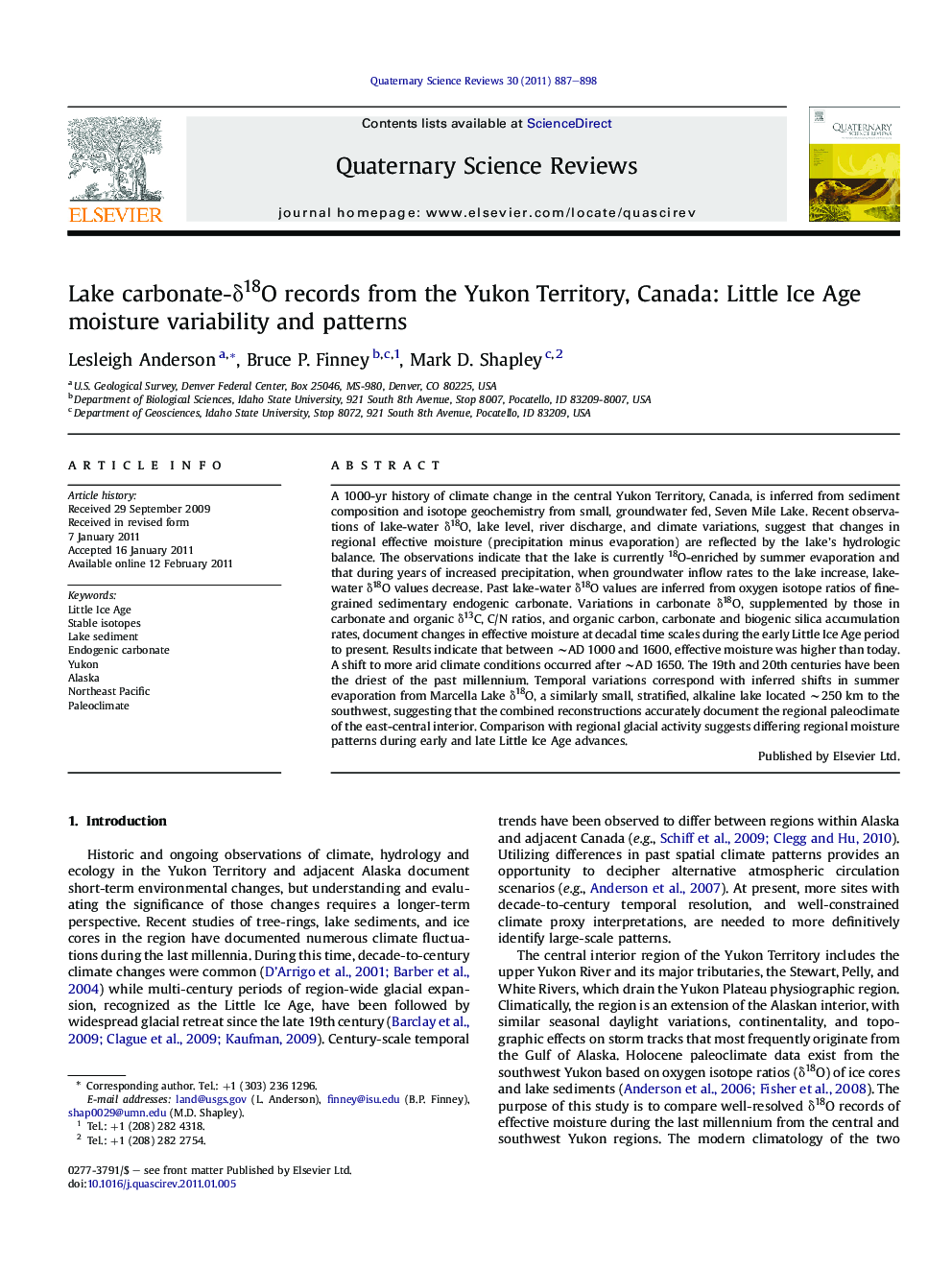| Article ID | Journal | Published Year | Pages | File Type |
|---|---|---|---|---|
| 4735918 | Quaternary Science Reviews | 2011 | 12 Pages |
A 1000-yr history of climate change in the central Yukon Territory, Canada, is inferred from sediment composition and isotope geochemistry from small, groundwater fed, Seven Mile Lake. Recent observations of lake-water δ18O, lake level, river discharge, and climate variations, suggest that changes in regional effective moisture (precipitation minus evaporation) are reflected by the lake’s hydrologic balance. The observations indicate that the lake is currently 18O-enriched by summer evaporation and that during years of increased precipitation, when groundwater inflow rates to the lake increase, lake-water δ18O values decrease. Past lake-water δ18O values are inferred from oxygen isotope ratios of fine-grained sedimentary endogenic carbonate. Variations in carbonate δ18O, supplemented by those in carbonate and organic δ13C, C/N ratios, and organic carbon, carbonate and biogenic silica accumulation rates, document changes in effective moisture at decadal time scales during the early Little Ice Age period to present. Results indicate that between ∼AD 1000 and 1600, effective moisture was higher than today. A shift to more arid climate conditions occurred after ∼AD 1650. The 19th and 20th centuries have been the driest of the past millennium. Temporal variations correspond with inferred shifts in summer evaporation from Marcella Lake δ18O, a similarly small, stratified, alkaline lake located ∼250 km to the southwest, suggesting that the combined reconstructions accurately document the regional paleoclimate of the east-central interior. Comparison with regional glacial activity suggests differing regional moisture patterns during early and late Little Ice Age advances.
► A 1000-yr sediment carbonate-δ18O record from Seven Mile Lake. ► Isotope hydrology modeling estimates climate sensitivity of δ18O. ► Correlation with lake carbonate-δ18O record from Marcella Lake. ► Higher effective moisture during early LIA, lower during late LIA. ► Weak Aleutian Low during early LIA, strong Aleutian Low during late LIA.
